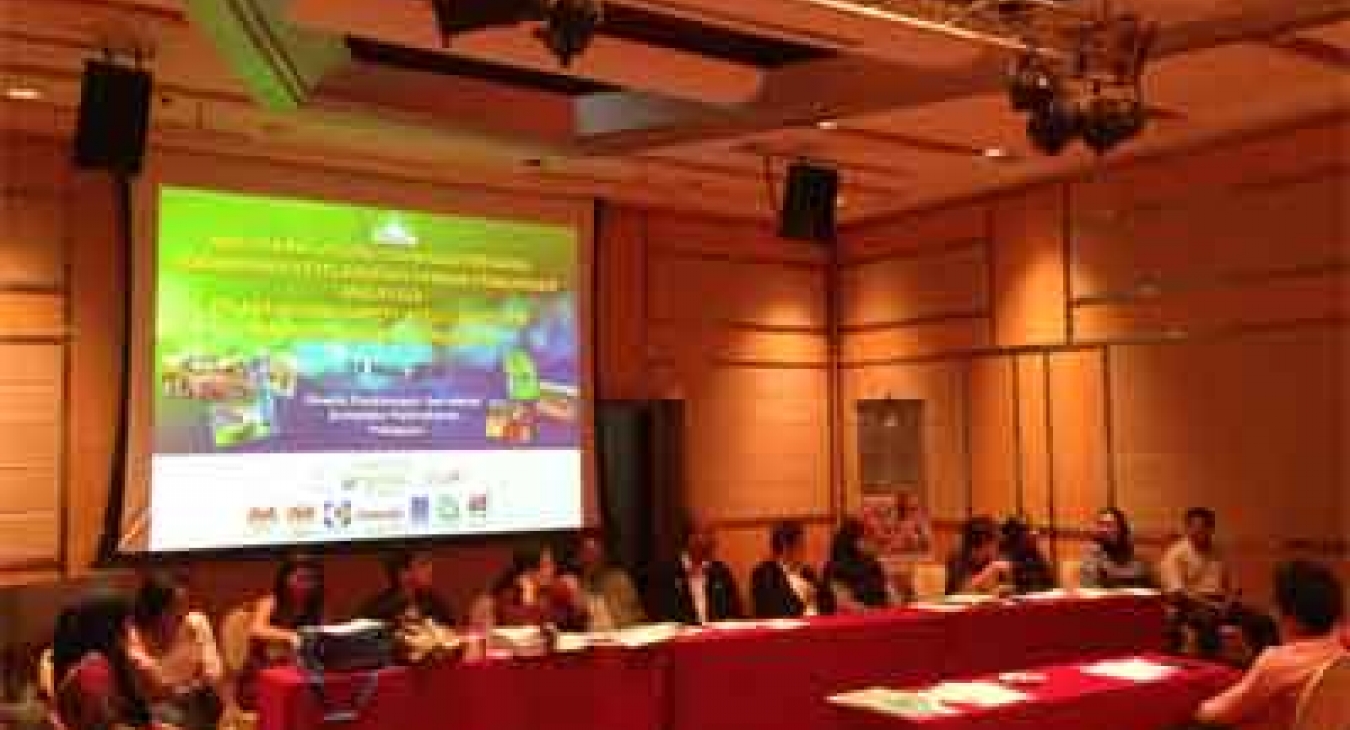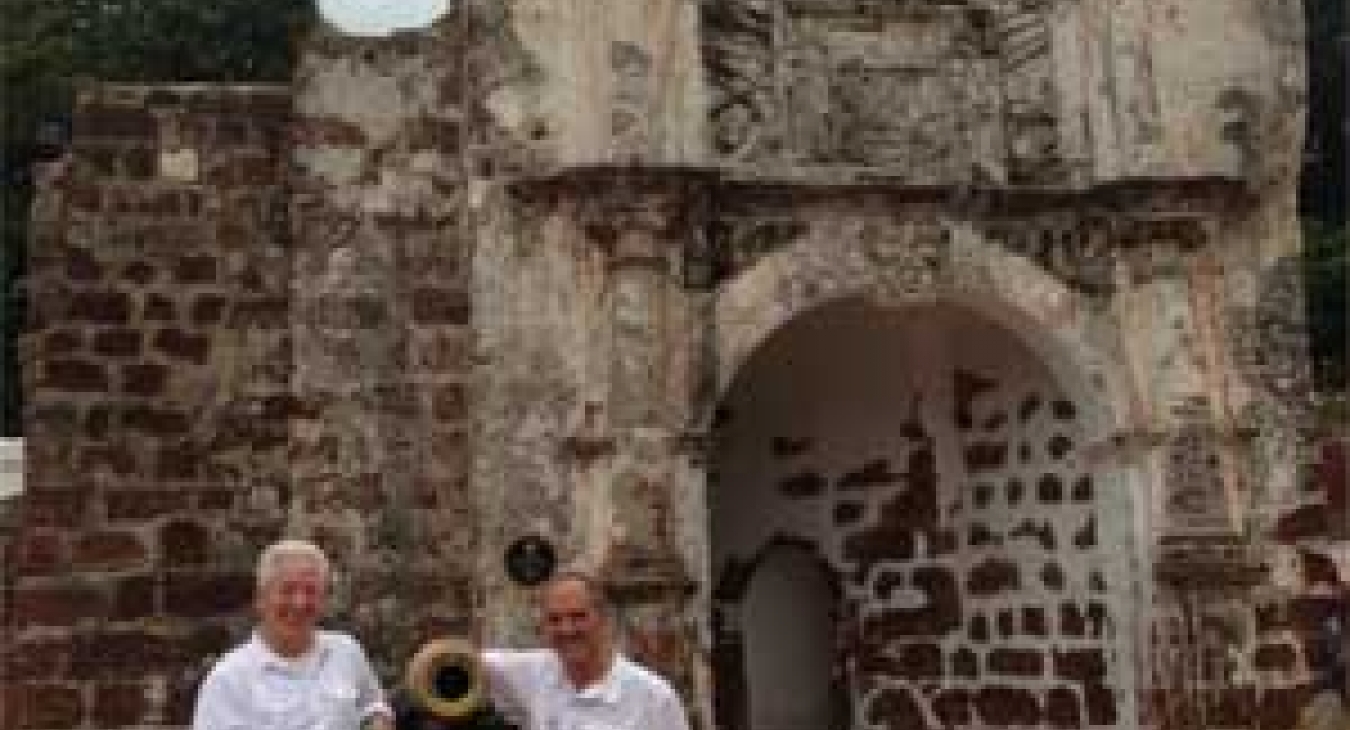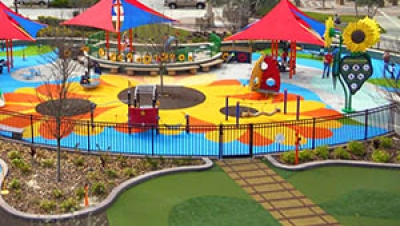IPSI Assists in the Formation of the Playground Safety Association of Malaysia
Malaysia has been in the news a lot this year and not for the best of reasons. I have had the opportunity to fly to Malaysia three years in a row to conduct the Certified Playground Safety Inspector (CPSI) course for the National Recreation and Park Association (NRPA). In addition, I have presented the Clemson Playground Maintenance Technician Course twice. This has been an interesting and rewarding personal international experience. I would like to share with you what has been accomplished over this short period of time.
Ms. Noriah Mat participated in the 2010 Singapore CPSI Course hosted by the Center for Urban Greenery and Ecology and National Parks Board. Noriah is Senior Deputy Director, Landscape Planning and Control, Department of Landscape and Parks, Perbadanan Putrajaya, Malaysia. She heard about the CPSI course and wanted to see firsthand what it was all about. During the two day program she shared with me her interest in improving the public play areas of Malaysia. Over the next year she worked with the Institute of Landscape Architects Malaysia (ILAM) and the International Playground Safety Institute, LLC (IPSI) to bring the course to Malaysia. The planning and approval process took just over one year, and in May 2012 the first CPSI Course and Exam was held in Putrajaya Malaysia.
Putrajaya is the government center of Malaysia. It was created and opened in 1995. It is located some 25 km outside of Kuala Lumpur and close to the Kuala Lumpur International Airport. Perbadanan Putrajayaor Putrajaya Corporation (PPJ) is a local authority which administrates the Federal Territory of Putrajaya. This agency is under Federal Territories Ministry of Malaysia. PPJ is responsible for public health and sanitation, waste removal and management, town planning, environmental protection and building control, social and economic development, and general maintenance functions of urban infrastructure. The PPJ main headquarters is located at Persiaran Perdana, Putrajaya.
Malaysia has an interesting government structure that I am still learning about. They still follow somewhat of a British government model with Monarchs and a Prime Minister. Malaysia consists of 13 States and 3 Federal Territories representing almost 30 million people. It is much larger than the peninsula we find on our world globe. I for years thought Singapore was Malaysia when looking at a small world map. You can tell world geography was not one of my best subjects. Shame on me. Malaysia was part of the Portuguese spice trade until being taken over by the Dutch. Then it became part of the British Empire in the 1800s and like Singapore gained their autonomy in the mid-1960s.
Putrajaya is a very new and modern model city. I refer to is as sort of the Disneyland of Governmental Centers. The PPJ has hosted each CPSI Course. Almost all the participants in these first courses have come from Putrajaya or Kuala Lumpur. While the number of CPSIs in Malaysia is small, their awareness and genuine interest in playground safety has been greatly enhanced. The first CPSI course was well received and started a three year commitment by the PPJ Department of Landscape and Parks to create a recognized professional organization for the improvement of their public play areas.
My first visit to Malaysia was an eye opening adventure. Besides the obvious cultural differences and personal experiences, I could not have estimated the environmental impact their climate has on the Malaysian playgrounds. It was easy to understand once you personally experience a full day traveling the countryside plus a special trip to one of their rainforests. It was immediately apparent that ultra violet (UV) radiation, heat, and humidity were eating up the unitary surfacing systems along with all the other materials used to make play components. Beyond the effects of Mother Nature there was an obvious lack of maintenance and repair to keep the structure functioning and safe for the children. They are using, almost totally, unitary surfacing systems, and every one that I saw did not come close to the current minimum international standards for equipment use zones or surfacing system performance. I quickly began to learn how and why things are as they appeared. Everyone I met was very cooperative. They were eager to learn more about everything that was presented in the CPSI Course.
When I look back at my first general observations during my training opportunities in Hong Kong, Singapore, and Malaysia, there was one common occurrence or lack thereof. All government agencies that manage and own public playgrounds use independent contractors for most maintenance and repair functions, if they are being done at all.
One of the major focuses of the CPSI Course and Playground Maintenance Technician training program is to emphasize the purpose of playground inspections, maintenance, and repair. The primary objective is first and foremost to provide for the safety of the children. Beyond that we want to assure the equipment functions as the manufacturer intended. This will minimize the likelihood of injuries as well as extend the life of the playground equipment and surfacing system. The third and final objective is mostly aesthetics. This particular objective usually deals with the appearance and general cleanliness of the equipment and the general playground area. This process addresses issues such as displaced surfacing material, horticulture and human litter, and sanitation issues, if observed.
This process is for the most part being addressed by the government’s independent landscape and custodial contractors. Unfortunately I did not see much evidence these contractors were addressing the obvious safety issues related to poor surfacing conditions and worn or broken equipment. I did not hear of any written documentation of inspections, and if they were being documented, the much needed maintenance and repairs were being overlooked or they were not thought to be a concern. While most of these countries are creating world class infrastructure, the ongoing maintenance and repairs necessary to sustain the infrastructure appear to be lacking.
Noriah Mat has confirmed my observations. She has focused her efforts on changing the current practices and philosophy on the culture of maintenance. She understands the need for general playground operation knowledge and training to effect change from traditional practices. Funds necessary for ongoing maintenance and repair have been difficult to secure. Money seems easier to secure for new infrastructure, but I see a new effort to change this practice.
I think the unfortunate reoccurring problem stems from the fact the people in charge are not engaged in the day to day operations. For this reason those who could best implement change do not see or understand the need for the repairs and maintenance for the safety of the users or to prolong the life of these facilities. Because of a lack of knowledge and understanding of the issues, change will take time. Until now nobody of authority has had any interest or ability to implement change. There is an old saying, “What you don’t know can’t hurt you,” but it can hurt the children. This is the reason why Noriah worked so hard to bring these training opportunities to Malaysia.
After the second CPSI course they had enough Certified Playground Safety Inspectors to begin to form a professional association. This new association, called the Playground Safety Association of Malaysia (PSAM), had their first official organizational meeting March 19, 2014. All the 2014 CPSI and PMT participants were invited to this meeting, which was scheduled in between the two programs. It provided the opportunity for all those interested in playground safety and maintenance to learn more about the Association’s mission, goals, and objectives. The Board Members of the PSAM presented their plan of action for the future of public playground management in Malaysia. They have a very active group of CPSIs who served on their Board of Directors for the first year during which time they were establishing their plan. During this March 19th meeting they expanded the PSAM Board from 8 to 15. The Board represents the different partner groups who represent all who would be involved in the creation and management of public playground facilities.
The PSAM Strategies as presented include:
- Provide appropriate surfacing
- Provide appropriate use zones
- Identify and eliminate safety concerns on playgrounds
- Ensure adequate spacing
- Encourage supervision
- Encourage appropriate age appropriate equipment
- Provide platforms with appropriate guardrails and barriers
- Review of MS 966:2001 current Malaysian standard published by SIRIM
- Install only equipment appropriate for public playgrounds
- Human capital development for playground safety (training)
- Provision of sign boards at all playground locations
- Continuous maintenance of playground
Their immediate Action Plan as stated will consist of three things. Performing a thorough maintenance inspection of all playgrounds every 6 months. Funding will be needed. In order to accomplish this task they will need to generate the necessary funding source and training necessary to assure maintenance and repairs are completed in a timely fashion. The last thing on their action plan was a program coordinator to be successful in conducting inspections, and timely maintenance will also require a coordinator at the local level.
I think the order of these three items might have been presented out of order. First they need the coordinator. Someone in charge with proper training. One could argue the funding is first, but this coordinator will be key in being politically successful in securing the necessary funds to implement their plan. The establishment of the funding source is key to implement their program. The key component of the plan or the major focus will be completing these 6 month inspections. The end result of these inspections must include timely maintenance and repairs to keep their playgrounds safe, functioning, and clean for all to enjoy. They have set a goal to create a maintenance fund equal to 10% of any playground project cost with a 2% annual increase in the fund to cover inflation.
They are developing their own guidelines on playground maintenance along with all the necessary relevant forms for implementation of the plan. The last action item on their to-do list is to renovate one major playground as a national demonstration of best practices. They are currently looking at the major play area in Kuala Lumpur across from Petronas Towers in the heart of downtown. This major playground was installed in the mid-1990s and is in need of a major facelift.
To help with this objective I made a day trip to Kuala Lumpur with many of the PSAM Board to assess the current condition of this playground. We took many pictures and conducted an overall assessment on the playground equipment and surfacing. The PSAM KLCC Playground Committee is currently creating a report to present to the local authorities. The hope is this project will become a model for best practices that will reinforce and demonstrate the intent of the PSAM Action Plan.
At the end of the March 19 meeting there were many photos taken to record this big moment. I had an opportunity to say a few words to the group. I congratulated everyone on the successful creation of this professional association. I thanked Noriah Mat for what she accomplished in such a short time, and I commended their Board for their hard work on behalf of all the children of Malaysia.
I expressed my feelings at that moment. I said,
“I feel like a proud parent taking their child to their first day of school. Many in attendance may not appreciate the significance of this first association meeting. Your task and challenge is to foster child development through safe challenging playground facilities, not to stifle play with unnecessary design restraints. You must work to identify and eliminate known hazards and maintain and inspect your playgrounds to keep your children safe. I wish you the best on your journey ahead.”
What is sad but true is I could have been talking about so many places here in the good ole USA. We too have our work cut out for us when it comes to routine inspections coupled with timely maintenance and repair.
LAr. Noriah Binta Mat, Senior Deputy Director, Landscape Planning and Control, Department of Landscape and Parks, Perbadanan Putrajaya (on left) - Datuk LAr. Haji Shahoran bin Johan Ariffin, Fellow member, Institute of Landscape Architects Malaysia (ILAM) and Chairman of Eurodesign SDN. BHD.

Celebration dinner with PSAM board members and Ken Kutska and Tom Kalousek
-Tiew Hai San, Undersecretary, Strategic Development Division, Ministry of Federal Territories and Urban Wellbeing
-Jayanthi d/o M. Sellamuthu, Standards Executive, Standards Development - Quality and Operational Procedures Section, Standards Management Department, SIRIM
-Song Li, Manager Business Development, Unique Green Recreation SDN. BHD.
-Datuk LAr. Haji Shahoran bin Johan Ariffin, Current Chair PSAM
-Chef at Pullman Hotel Putrajaya
-Tom Kalousek, IPSI Associate
-Ken Kutska, IPSI Executive Director
-LAr. Noriah Binta Mat, Senior Deputy Drector, Landscape and Planning and Control, Department of Landscape and Parks, Perbadanan Putrjaya
-Yang Suselawati Zakaria, Business Development Manager, Indah Aroma Enterprise
-Joanna Ong, Playpoint, Business Development Manager

Ken Kutska and Tom Kalousek sightseeing in Malaysia
Comments
1














Add new comment